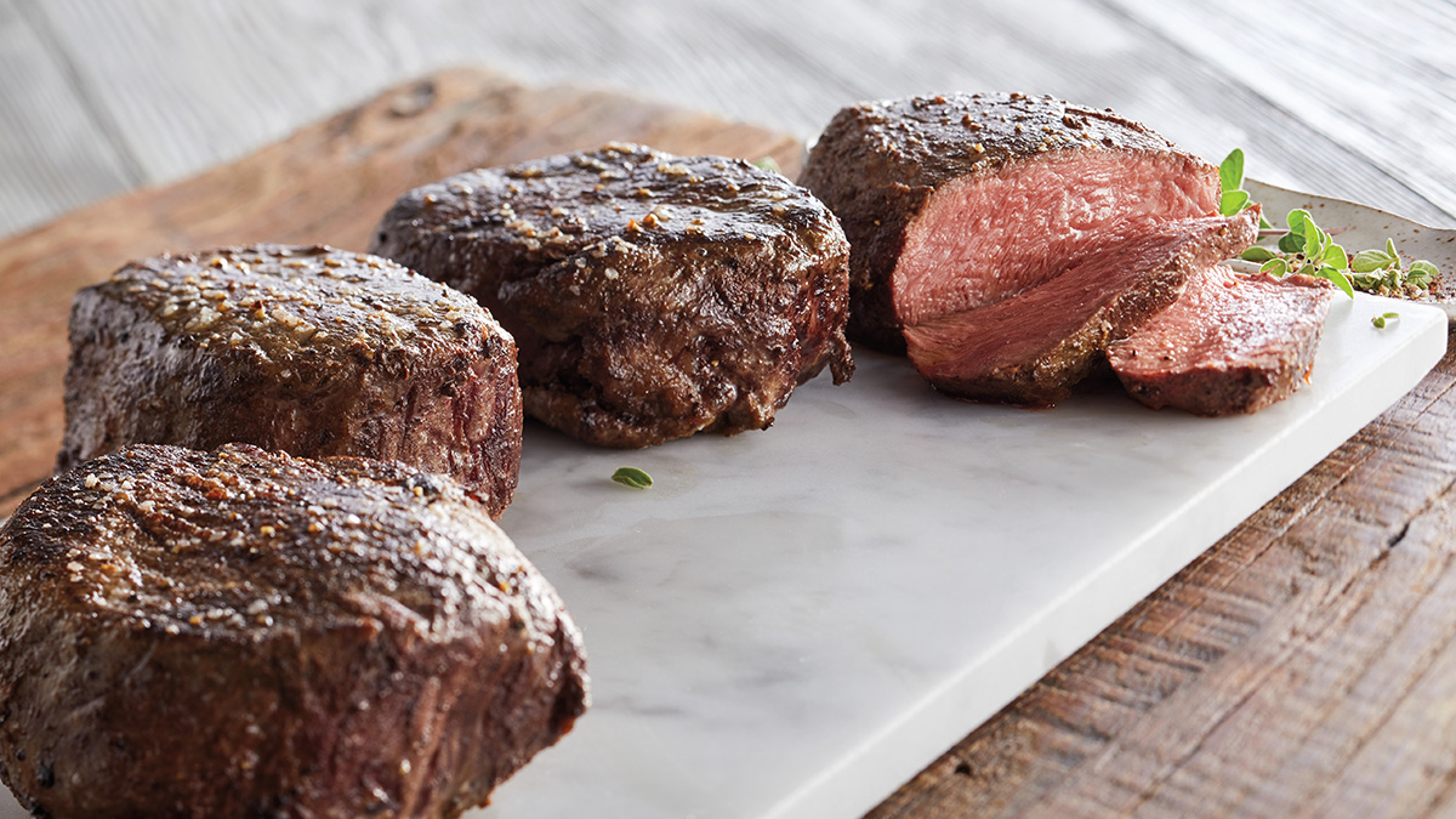The Ultimate Guide to Filet Mignon
This cut of beef may be small, but it's big on taste and tenderness. Don't forget the pat of butter.
Oct 14, 2021
Nobody ever asked “Where's the beef?" after biting into a juicy, succulent slice of filet mignon. This tender cut comes from the aptly named tenderloin, a part of the steer that does not move much during the animal's life. This means there's less connective tissue in a filet than in other popular cuts, such as the ribeye or New York strip steak. It's also why filet mignon delivers such pure, meaty flavor, making it one of the most desirable — and expensive — items on a steakhouse menu, at the butcher, or if you order steaks online.
History of filet mignon
Why the French name? The word filet translates literally to "a small cut of meat without the bone." And mignon means “cute" or “dainty," an apropos description given that most servings are only about six to eight ounces. Smaller portions are sometimes displayed as “petit filet" and top out at five ounces. You can also call it scarce, given the fact that the average cow yields only about one pound of the cut known as filet mignon.
In a bit of a twist, the French didn't necessarily coin the term “filet mignon" as it relates to steak. In France, the beef cut is known as filet de boeuf, whereas filet mignon describes a pork tenderloin. The attribution for the steak terminology generally goes to the revered American writer O. Henry, who described beef tenderloin steak as filet mignon in The Four Million, his 1906 collection of stories about New Yorkers.
Because filet mignon is so tender, practically melting in your mouth when cooked correctly, it's considered a luxury. Smoothly textured and with a straightforward yet subdued beefy flavor, it could even be called a gateway cut to other more marbled and flavorful steaks, such as the chef's favorite, the ribeye, or backyard grilling standbys like the T-bone, sirloin, or New York strip.
How to cook filet mignon
Another reason people love the filet is how easy it is to cook. Pan searing a filet and finishing it in the oven can yield a perfect texture and juiciness. Preheat the oven to 400° F. Next, heat a cast-iron pan (or any oven-safe pan) over high heat. Add a pat of butter and quickly place the filet in the pan. Cook for two minutes on one side, and then flip and cook for another two minutes. Place the pan in the oven to finish for about six to seven minutes. Once the internal temperature reaches 135° F (for medium rare), let the meat rest for five minutes before slicing it.
Due to its inherent tenderness, filet mignon doesn't need a marinade, but the subtle beef flavor takes well to herbs, sauces, and sides. Sierra Castellano, senior director merchandising, wine and gourmet food at Harry & David, says, “I like filet mignon best when it's pan seared with butter, topped with Rogue Creamery blue cheese, and served with a side of creamy horseradish."
When cooking a filet mignon in butter, try adding whole sprigs of rosemary or thyme to add an herbaceous punch.
For seasoning, the usual salt and pepper does the trick. For a steakhouse touch, try a peppercorn steak rub and cook with shallots and a splash of cognac, adding a few drops of cream to the pan to finish.
Because of the filet's small size, it also is amazing when wrapped in puff pastry and sealed with sautéed mushrooms in the popular preparation known as beef Wellington. This savory conversation piece is a festive addition to the holiday table or can be served for any celebration.
So are filets wrapped in bacon.

Best wine to pair with filet mignon
As with any hearty steak, pair your filet with a lush red wine. Castellano recommends two wines from Harry & David: Reserve Pinot Noir and Reserve Cabernet Sauvignon. “Both have good body, tannins and acidity, and are fruit forward, which complements the meat nicely," she says.
.svg?q=70&width=384&auto=webp)







